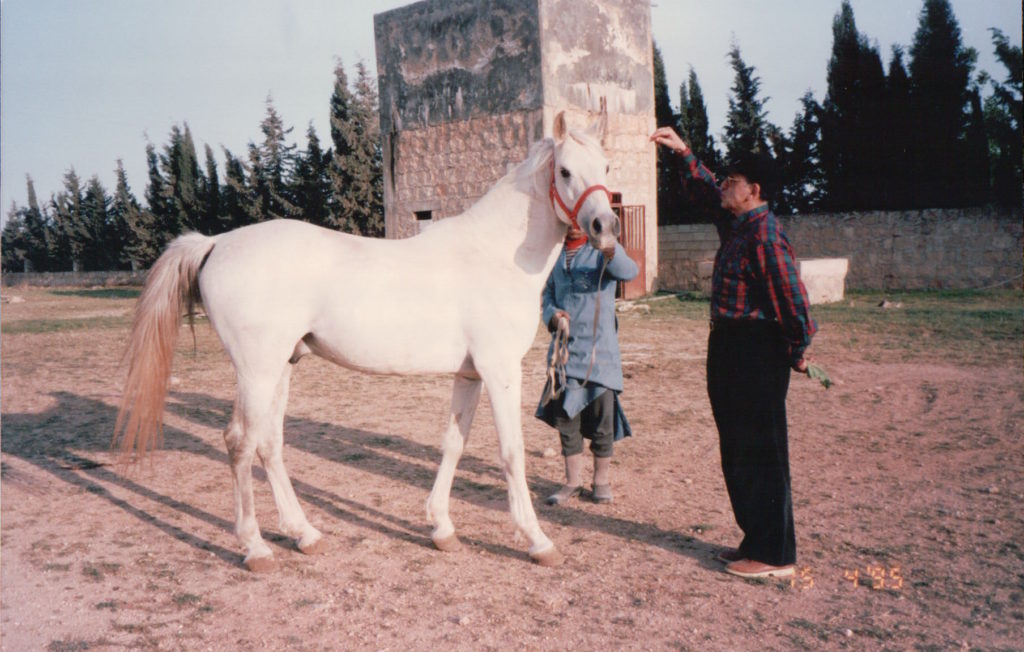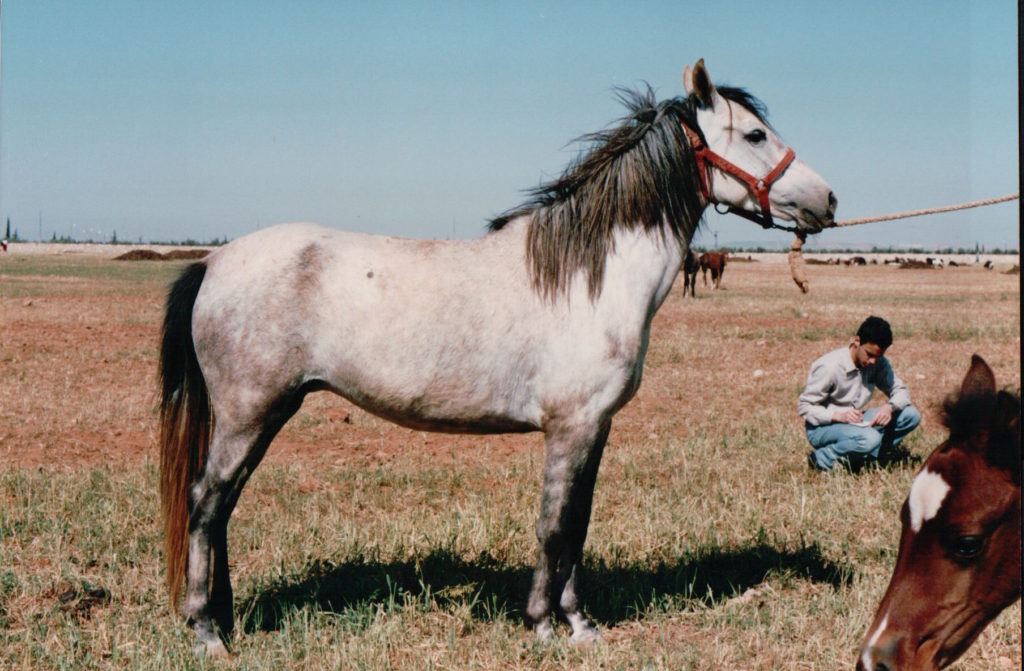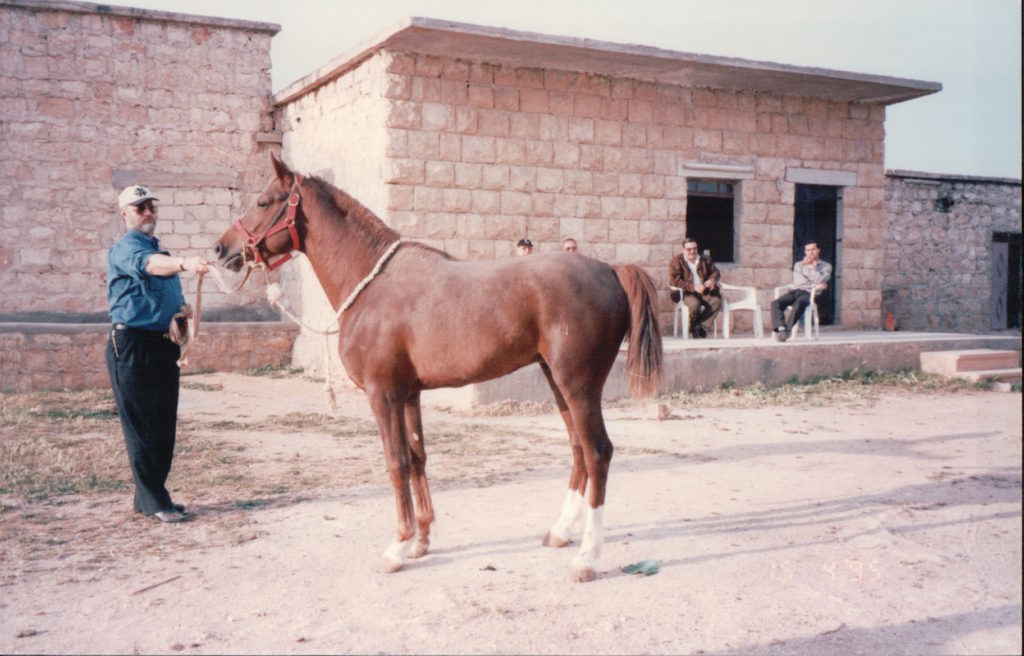The people in the photos
The more time passes, the more I cherish those precious few horse photos that also happen to show a glimpse of the people around the horses. I used to believe that good horse conformation shots should not show the handler, and certainly not the people in the background. When they did, I would relentlessly crop the people out. I now realize that the people, some of them now gone, are an integral part of the story the photo is telling.
Below, a filly at Mustafa al-Jabri’s farm in 1993, with Radwan Shabareq and Kamal ‘Abd al-Khaliq standing in the background, and me sitting on the grass. My father wanted to buy the filly, and took many photos of her.

Below, a youthful Chris Bauduin on Murad Hadiya in 1994. In the background, from left to right, Jean-Claude Rajot, myself in the green jacket, a lady whose name I forget and Louis Bauduin near Nemours, France.

Below, my father standing near his beloved Ubayyan Suhayli stallion Dahess, then standing at the Jabri farm outside Aleppo in the mid 1990s.

And below, me taking notes behind a young Jabri mare whose name and strain escapes me now. Either a Hamdaniyah or a Saqlawiyah

And below, Radwan Shabareq in his beard phase, holding the crippled stallion Ihsan II (Mahrous x Barakah) in 1995. In the background, from left to right, my father with the black cap, Mustafa al-Jabri, his brother Saadallah al-Jabri, and the young man then in charge of Mustafa’s office, his name Dawud I think.

I agree. The history of the horse means very little without the history of the people who lived with them. Who bred them, why did they breed them, why did they ride them, what did they do with them– and where does that fit in with the general trends of society, culture, religion, politics, etc. The more I research Arabian history, the more I find this is true for them. And if we don’t save these snapshots of the people who worked with these horses, and the stories of their work with these horses, we develop even larger gaps in the record.
Preaching to the choir, here, I realize, but it’s so frustrating.
Thank you so much for sharing these!
I second Moira’s reply. The more i look into the history of any horse breed, the more I realise that it often only makes sense when you know about the people who bred them, rode them, loved them. And it is definitely true for the Arabian horse. Thank you for sharing these photos, and telling us about the people as well as the horses!